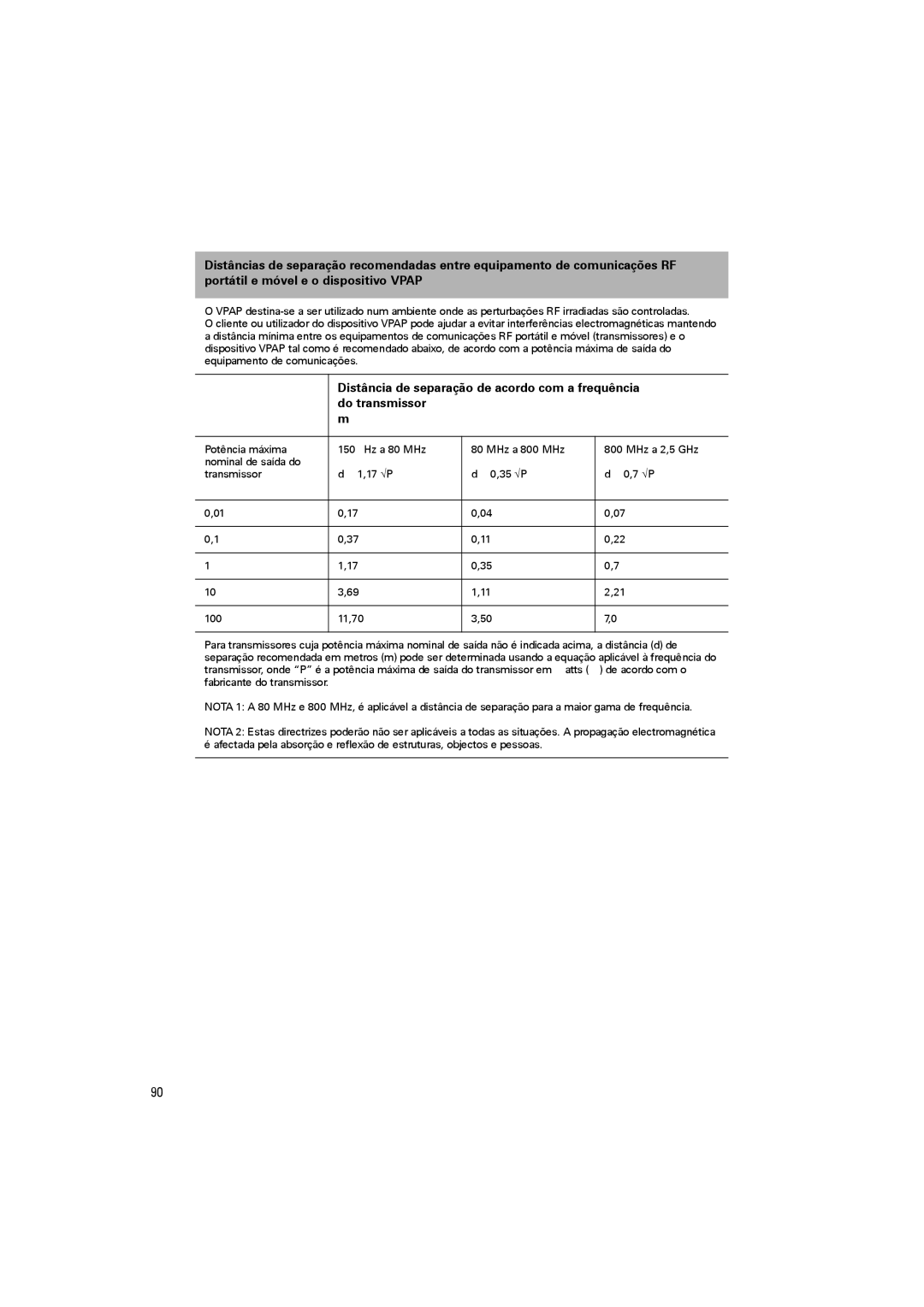VPAPTm III$IIIst specifications
The ResMed VPAP™ III ST is a sophisticated bilevel positive airway pressure (BiPAP) device designed for patients with complex respiratory conditions such as obstructive sleep apnea and chronic obstructive pulmonary disease (COPD). It is renowned for its robust performance, user-friendly interface, and advanced features that enhance patient comfort and compliance.One of the main features of the VPAP III ST is its easy-to-navigate display. The color LCD screen provides clear, concise information on treatment settings and patient usage data, which allows both healthcare providers and patients to monitor the effectiveness of the therapy. The device also offers a range of customizable settings, allowing it to cater specifically to individual patient needs.
Another remarkable aspect of the VPAP III ST is its Adaptive Servo-Ventilation (ASV) technology. This advanced algorithm continuously monitors the patient’s breathing patterns, adjusting the pressure in real-time to ensure optimal support during each respiratory cycle. This adaptability helps to maintain effective ventilation while minimizing discomfort that might arise from constant pressure settings.
The VPAP III ST features AutoSet™, a technology that automatically adjusts pressure levels based on detected airflow limitations. This feature enhances patient comfort by reducing pressure during exhalation and providing higher support during inhalation, creating a more natural breathing experience. This automatic adjustment means patients are less likely to experience the discomfort associated with forced ventilatory pressures.
Moreover, the device includes an integrated humidifier, which decreases the risk of upper airway irritation and dryness. The heated humidifier can be adjusted according to patient preferences and environmental conditions to provide optimal moisture levels during therapy.
In terms of portability, the VPAP III ST is designed to be user-friendly with innovative features such as a lightweight design, making it easier for patients to use at home or while traveling. The device is compatible with a variety of mask options, ensuring that patients can find a comfortable fit that suits their individual needs.
Additionally, the VPAP III ST offers comprehensive data reporting capabilities, allowing healthcare providers to track patient adherence and therapy effectiveness over time. This data can be invaluable in making adjustments to treatment plans and ensuring that patients remain on track with their therapy.
In conclusion, the ResMed VPAP™ III ST is a leading-edge respiratory therapy device that combines advanced technology with user-centric design. Its adaptive features, customizable settings, and built-in humidification contribute to an optimal treatment experience, ensuring patients receive the care they need for improved respiratory health.

